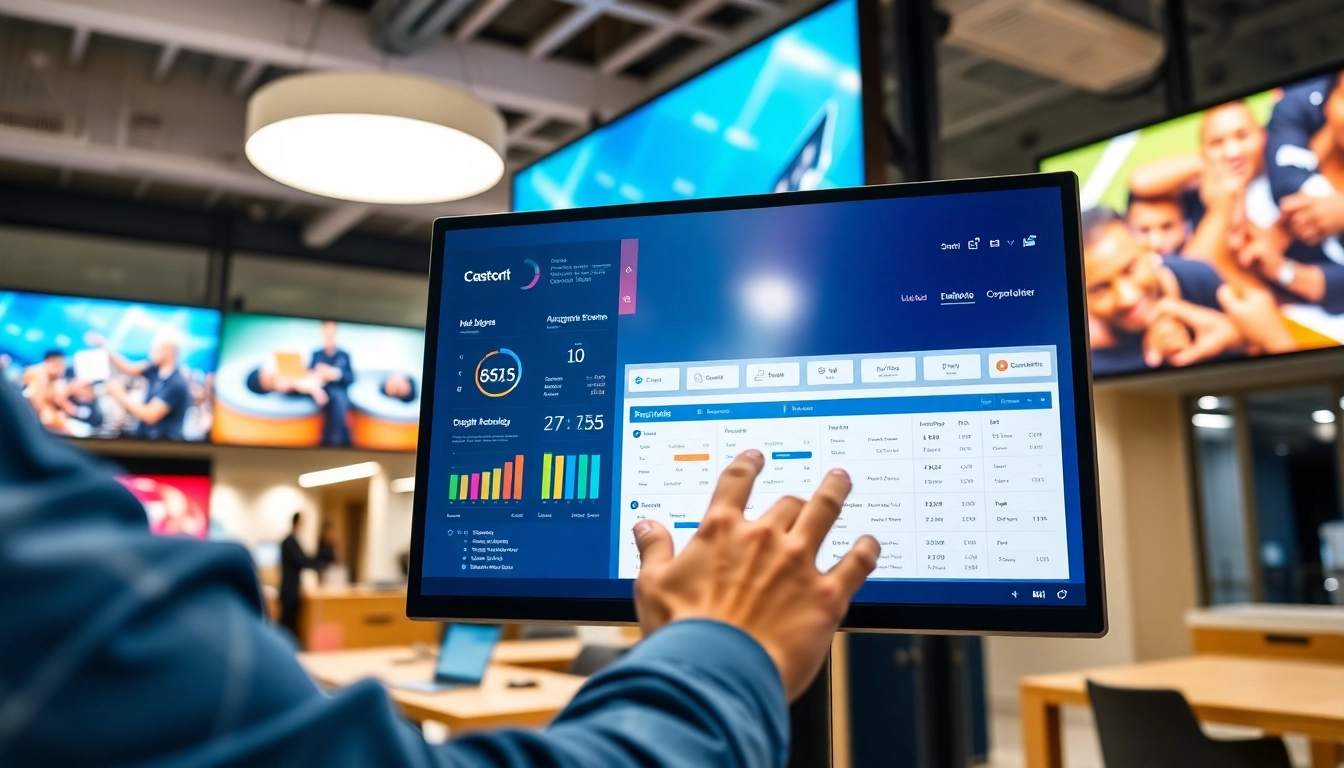Understanding the AI Detector Technology
What is an ai detector?
An ai detector is a sophisticated tool designed to discern whether text, images, or videos were generated by artificial intelligence or created by humans. As AI technologies continue to evolve rapidly, the need for reliable detection tools has become paramount. These detectors utilize complex algorithms, machine learning, and natural language processing to assess content, providing insights into its origin and authenticity.
How does an ai detector work?
The functioning of an ai detector involves a multi-faceted approach. Primarily, these tools analyze textual patterns using linguistic cues that can signal the presence of AI-generated material. This evaluation typically includes:
- Lexical Analysis: AI detectors examine the choice of words, sentence structure, and overall grammatical style. Machine-generated content may exhibit distinct patterns compared to human writing.
- Statistical Techniques: Algorithms calculate probabilities of certain phrases or styles appearing within a dataset, helping to reveal the likelihood of AI involvement.
- Comparison with Known Samples: Many detectors are trained on extensive datasets that include both human and AI-generated content, enabling them to identify nuanced differences by comparison.
These components work in combination, allowing for a layered and nuanced understanding of the content in question.
Benefits of using an ai detector
The integration of an ai detector offers numerous advantages:
- Authenticity Verification: It helps ensure that content is generated by legitimate sources, preserving intellectual property and academic integrity.
- Detection of Plagiarism: Many ai detectors can also highlight any potential issues related to plagiarism, a growing concern in educational environments.
- Quality Control: For businesses that utilize AI tools for content generation, detectors ensure the output aligns with quality standards expected in human writing.
- Enhanced Trust: By verifying the origin of content, organizations can foster greater trust from their audiences.
Different Types of AI Detectors
Text-based ai detectors
Text-based ai detectors are specifically designed to analyze written content. They evaluate syntax, word usage, and semantic structures to differentiate between human and AI-generated text. These detectors often employ context-aware algorithms that adapt to various contextual themes, which may include:
- General Text Detection: Assesses general articles, essays, and publications for AI indicators.
- Dialogue Detection: Focuses on dialogues in scripts or conversation-based formats, identifying typical AI patterns.
Image and video ai detectors
As multimedia content becomes pervasive, the demand for image and video detectors has surged. These tools analyze various aspects of visual content to determine its authenticity, considering factors such as:
- Pixel Analysis: Detects anomalies in image data that might indicate manipulation or AI generation.
- Style Recognition: Evaluates artistic styles that AI may emulate, thereby identifying non-human creation.
Customizable ai detector tools
With the diverse applications of AI across industries, customizable detectors have emerged, allowing users to adapt the detection criteria to meet specific requirements. Such tools often come with features including:
- User Input Variables: Users can define what constitutes AI-generated content based on their industry standards.
- Integration with Other Tools: Custom tools can sometimes integrate with content management systems and plagiarism checkers, enhancing their utility and versatility.
Choosing the Right AI Detector for Your Needs
Factors to consider when selecting an ai detector
When selecting an ai detector, several factors warrant careful consideration:
- Accuracy: Look for detectors that are reputed for high accuracy rates, ensuring trustworthy results.
- Scope of Detection: Assess whether you need a detector focused solely on text, or one that can analyze images and videos as well.
- User-Friendly Interface: The effectiveness of a tool is often contingent on its ease of use. Choose one that offers intuitive navigation.
- Support and Updates: Opt for tools that receive regular updates to adapt to evolving AI technologies.
Pricing and accessibility of various ai detectors
Budget considerations often play a crucial role in the selection of an ai detector. Some key points include:
- Free vs. Paid Models: Free tools may suffice for basic needs, but premium models often provide more robust features, accuracy, and support.
- Subscription Plans: Evaluate the various pricing models to discover what best aligns with your frequency of use and essential features.
User reviews and expert recommendations
Before making a selection, it can be beneficial to explore user reviews and expert recommendations. Feedback from actual users provides insights into the functionality and reliability of a tool while expert evaluations often highlight performance metrics and case studies that show effectiveness in real-world applications.
Common Challenges in AI Detection
Limitations of current ai detector technology
Despite advancements, ai detection technology is not without its challenges:
- Complexity of AI Overlap: As AI becomes increasingly sophisticated, machines may replicate human writing styles so effectively that detection becomes a challenge.
- Data Variability: Different AI platforms may produce content that varies in style and quality, complicating detection efforts.
Addressing false positives and negatives
False positives (when human content is incorrectly flagged) and negatives (where AI content is not detected) are significant issues:
To mitigate these challenges, developers can enhance algorithms with machine learning techniques that refine their accuracy over time, adapting to new patterns and reducing error rates.
Enhancing the accuracy of ai detectors
Improving the precision of ai detectors hinges on:
- Data Training Sets: Using large, diverse datasets during the training phase can enhance a detector’s capability to distinguish between human and AI-generated text.
- Continuous Learning: Implementing adaptive learning systems that evolve with the changing landscape of AI creation ensures that detectors remain relevant and effective.
Future Trends in AI Detection Technology
Innovations on the horizon for ai detector tools
The realm of AI detection is poised for various innovations aimed at improving detection methodologies, including:
- Integration of Advanced AI: Future detectors may integrate AI themselves to create dynamic models that continuously assess changes in AI generation techniques.
- Blockchain Verification: Utilizing blockchain technology may provide a layer of security and verification in determining the origin of content.
The impact of evolving AI systems on detection
As AI systems evolve, so too must detection tools. It is likely that AI detectors will increasingly need to adapt to new generative technologies and methods, emphasizing the need for sustainable development in this field.
Preparing for next-generation ai detectors
To effectively prepare for the future landscape of AI detection:
- Staying Informed: Keeping abreast of advancements in AI and machine learning technologies will provide insights necessary for anticipating changes in detection needs.
- Investing in Training: Equipping teams with knowledge about both AI content creation and detection will create a more robust approach to managing AI-related challenges.















Leave a Reply